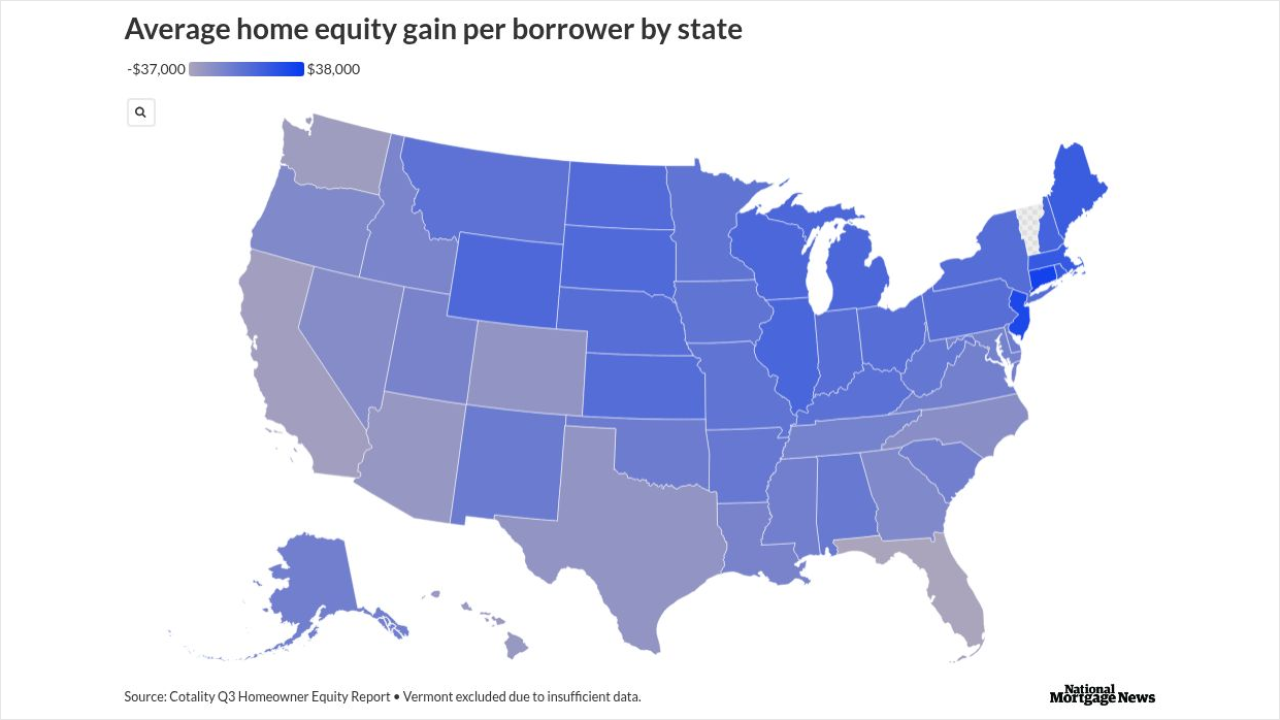Fannie Mae's latest results show stockholders' equity rose further in the third quarter as earnings came in higher than in the previous fiscal period and approached year-ago numbers.
The government-sponsored enterprise, which is the larger of two conservatorship entities the Trump administration is
These numbers reflected some improvement from
The 16% gain in earnings versus the second quarter and 5% drop from a year ago was mainly due to changes in provision for credit losses, Chief Financial Officer Chryssa Halley, said during a call Wednesday morning. While Fannie's earnings have fluctuated over time, it has been consistently profitable for 31 consecutive quarters.
Halley conducted the call given CEO Priscilla Almodovar's recent departure.
Where some of Fannie's other key metrics stand
An illustrative return on required equity measure that Fannie calculates based on annualized year-to-date net income divided by the average common equity tier one capital requirement increased to 10.3% from 9.5% the previous quarter.
Fannie's regulatory capital position reflected a total deficit of $25.4 billion despite its $105.5 billion net worth. This stems from the fact that its senior preferred stock and deferred tax assets do not count as regulatory capital
"In addition to the $25 billion deficit, we would need $190 billion of eligible capital to fulfill our total capital requirements," Halley said.
Even with this on-paper deficit, Fannie's latest
"They showed that even in a scenario more severe than the Great Recession, we continue to support the housing market during times of stress," she said, referring to the crisis that drove Fannie and another GSE, Freddie Mac, into conservatorship.
Guarantee fee, mortgage rate, credit and efficiency impacts
Stable guarantee fees reported through net interest income accounted for almost 81% of third quarter net revenues and supported growth in Fannie's net worth. These fees are dependent on home prices, mortgage rates and market share, Halley noted.
"Through the third quarter, we see base guarantee fees trending up slightly as the single family book slowly turns over at higher guarantee fees and the multifamily book grows," Halley said. Fannie has a $4.1 trillion guarantee book of business.
While mortgage rates dropped during the fiscal period, Halley said their impact on Fannie will arrive with a lag.
"It typically takes two to three months to observe related changes in acquisition volumes based on rates of the current loans in our single-family book," she said.
In the meantime, efficiency initiatives lowered costs another notch, Halley said that these have included measures related to staffing expenditures and a shift in how distressed homes are handled.
"We had lower foreclosed property expenses where we have changed our strategy for
Purchase loan acquisitions outweighed refinancing during the quarter and accounted for a further rise in mortgages with credit scores below 680 and debt-to-income ratios above 43%.
"We are monitoring those items," Halley said. "Purchasers tend to enter at or near their monthly mortgage payment affordability level, so we would expect the trend to persist until rates decline and refinance activity picks up."
Potential monetary policy shift with implications for Fannie
Fannie's results arrived just ahead of a meeting this after when monetary policy officials will release their latest plans for short-term rates and the Federal Reserve's bond portfolio, which contains some of the GSE's mortgage-backed securities.
Of the two monetary policy levers, the bonds can have a more direct bearing on the long-term rates that most home loans have. That's particularly true in this case because the mortgage market has already priced in an anticipatory short-term rate cut but is less certain about the portfolio.
Some experts have speculated that the officials of the Federal Open Market Committee also could move forward with plans to suspend or
"With the federal shutdown, GDP growth slows by 1/10th of a point for every week the federal government is shut. We're starting to add some real GDP points," said Amy Crews Cutts, president of AC Cutts and Associates LLC and a longtime industry economist.
If the FOMC chooses to stop or pause runoff to address that concern, mortgage rates could move modestly lower and refinancing could pick up at the margins.





